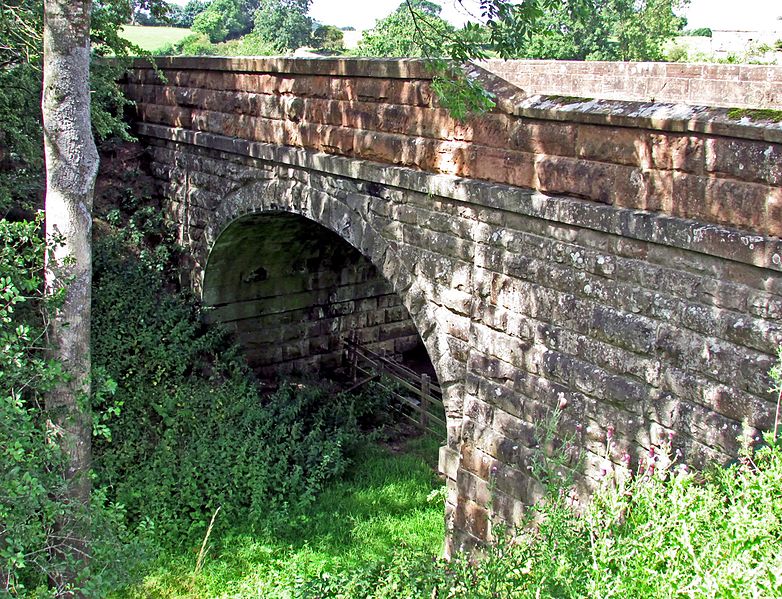Great Musgrave: infilled bridge a sad reflection on state of the industry

|
Contents |
[edit] Introduction
ICE Fellow Judith Sykes said the infilling of a Victorian bridge with concrete emphasises the need for design principles to be part of a project's whole lifecycle. Skyes has described the infilling of a Victorian bridge in Cumbria as "shocking" and a "sad reflection" on the state of the industry.
[edit] Safety concerns
The Great Musgrave Bridge was infilled with hundreds of tonnes of concrete to "prevent further deterioration of the bridge from occurring and remove the associated risk of structural collapse”, according to the Government’s roads body, Highways England. The situation emphasised the timeliness of ICE's Design Report, published in July 2021.
“The recent images of the infilling of the arches in Cumbria are shocking,” said Judith Sykes, director of Expedition Engineering and member of ICE's 2020 State of the Nation steering group for the net zero emissions report.
"With all the advances in technology and engineering practice [since the bridge was built 159 years ago], the approach taken is a sad reflection on our industry. For so many reasons – carbon, waste, visual impact, ecology, future proofing – infilling with concrete is not the answer.
"We have to ask how the culture and practice of our sector enabled such an unthinking approach to repair of historic infrastructure," said Sykes.
[edit] Why whole-life design must be embedded
The bridge being infilled is an example of why design needs to be embedded throughout a project’s whole life, including at the repair and maintenance stages, Sykes said.
Sykes was appointed to The National Infrastructure Commission's (NIC) Design Group in 2019, which launched the Design Principles the same year to raise the level of understanding of how design and design thinking can create value, be climate responsive, enhance the lives of people and contribute to sense of place.
In 2021, ICE and the NIC conducted a survey to better understand how the civil engineering culture can deliver the design principles.
One of the key findings of the research was the need for business models that support better design outcomes. It also highlighted how much more work needs to be done to raise the profile of design at all stages of the project lifecycle.
Sykes said: “The repair and maintenance of our infrastructure assets will be critical to the UK’s mission to be net zero by 2050. Our mission is that all infrastructure companies and their supply chains will adopt the design principles and embed within business practice.”
“With the NIC’s call for design champions to be part of all projects from the end of the year, hopefully we will see an end to such disappointing solutions being implemented,” she added.
This article originally appeared on the news portion of the ICE website. It was written by Anh Nguyen and published on 10 August 2021.
--The Institution of Civil Engineers
[edit] Related articles on Designing Buildings Wiki
- Climate change is overlooked in infrastructure projects.
- Highways England.
- ICE articles on Designing Buildings Wiki.
- Project lifecycle for major road projects.
- Vision and validate: a third way in designing the roads of the future.
- Why demolition and infilling are blunt weapons in the management of historic structures.
[edit] External resources
Featured articles and news
RTPI leader to become new CIOB Chief Executive Officer
Dr Victoria Hills MRTPI, FICE to take over after Caroline Gumble’s departure.
Social and affordable housing, a long term plan for delivery
The “Delivering a Decade of Renewal for Social and Affordable Housing” strategy sets out future path.
A change to adoptive architecture
Effects of global weather warming on architectural detailing, material choice and human interaction.
The proposed publicly owned and backed subsidiary of Homes England, to facilitate new homes.
How big is the problem and what can we do to mitigate the effects?
Overheating guidance and tools for building designers
A number of cool guides to help with the heat.
The UK's Modern Industrial Strategy: A 10 year plan
Previous consultation criticism, current key elements and general support with some persisting reservations.
Building Safety Regulator reforms
New roles, new staff and a new fast track service pave the way for a single construction regulator.
Architectural Technologist CPDs and Communications
CIAT CPD… and how you can do it!
Cooling centres and cool spaces
Managing extreme heat in cities by directing the public to places for heat stress relief and water sources.
Winter gardens: A brief history and warm variations
Extending the season with glass in different forms and terms.
Restoring Great Yarmouth's Winter Gardens
Transforming one of the least sustainable constructions imaginable.
Construction Skills Mission Board launch sector drive
Newly formed government and industry collaboration set strategy for recruiting an additional 100,000 construction workers a year.
New Architects Code comes into effect in September 2025
ARB Architects Code of Conduct and Practice available with ongoing consultation regarding guidance.
Welsh Skills Body (Medr) launches ambitious plan
The new skills body brings together funding and regulation of tertiary education and research for the devolved nation.
Paul Gandy FCIOB announced as next CIOB President
Former Tilbury Douglas CEO takes helm.
UK Infrastructure: A 10 Year Strategy. In brief with reactions
With the National Infrastructure and Service Transformation Authority (NISTA).
























Comments